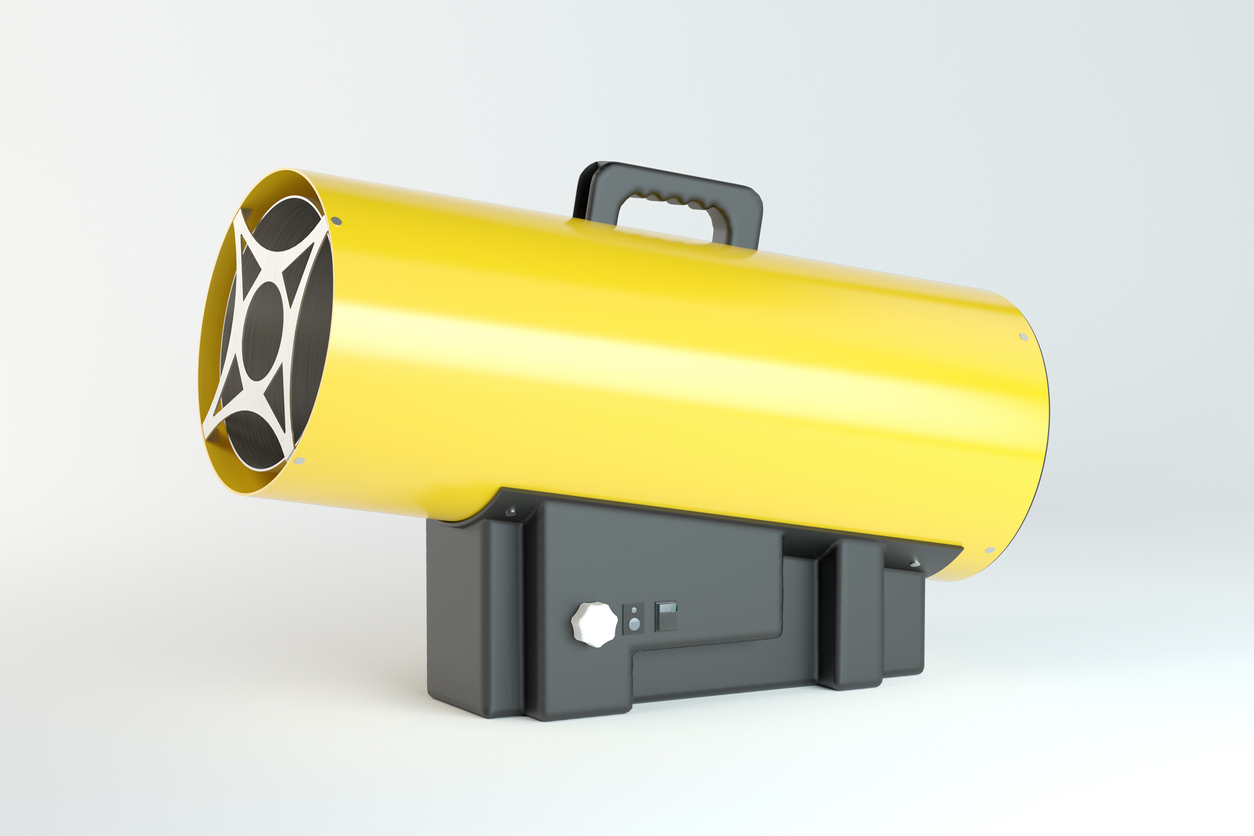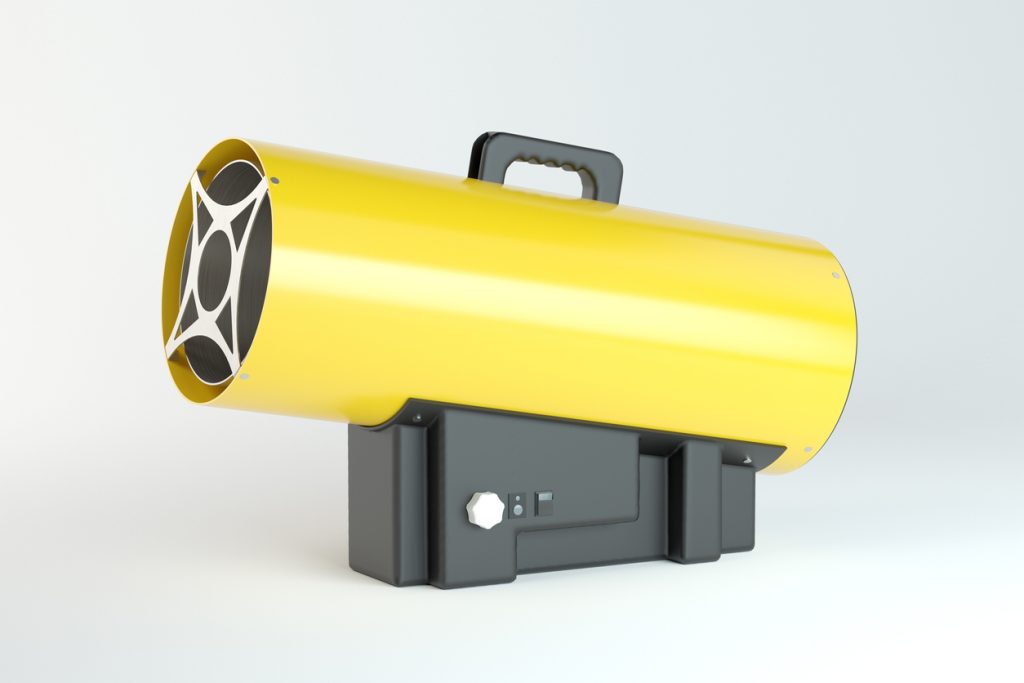

gas equipment, 3D illustration
Often builders will use a propane heater to dry paint, drywall mud, etc. but what happens when hardwood is installed before the house has a chance to properly dry?
The issue with propane heaters is that propane produces 4 cubic feet of water vapor for every cubic foot of gas it burns. Natural gas produces 2 cubic feet of water vapor for every cubic foot of gas it burns—see the problem? Instead of drying out the drywall mud or paint, burning a gas heater in the home is actually adding water vapor to the mix. This means that the home will take much longer to dry out and that your hardwood will take longer to acclimate and adjust to ambient moisture conditions before it can be installed.
Installing your hardwood flooring when it hasn’t had time to acclimate and get within the range (between sub-floor and flooring) to meet NWFA installation requirements, can result in squeaks, warps, cupping or uneven floors. That means an expensive call back for you and unhappy customers. Find tips on how to properly acclimate flooring here.
When you burn a gas heater in a home, the fuel combines with oxygen to form water vapor. If you are utilizing a 1 million Btu/hour heater, you will be releasing 1 to 2 tons of water into the home every 24 hours (depending on the gas you are using).
If you install a direct-fired heating system, be sure to install an exhaust system that is big enough to remove all the water vapor from the home. Excessive moisture can cause mold and mildew, reduce the performance of fiberglass insulation and damage framing members over time.
